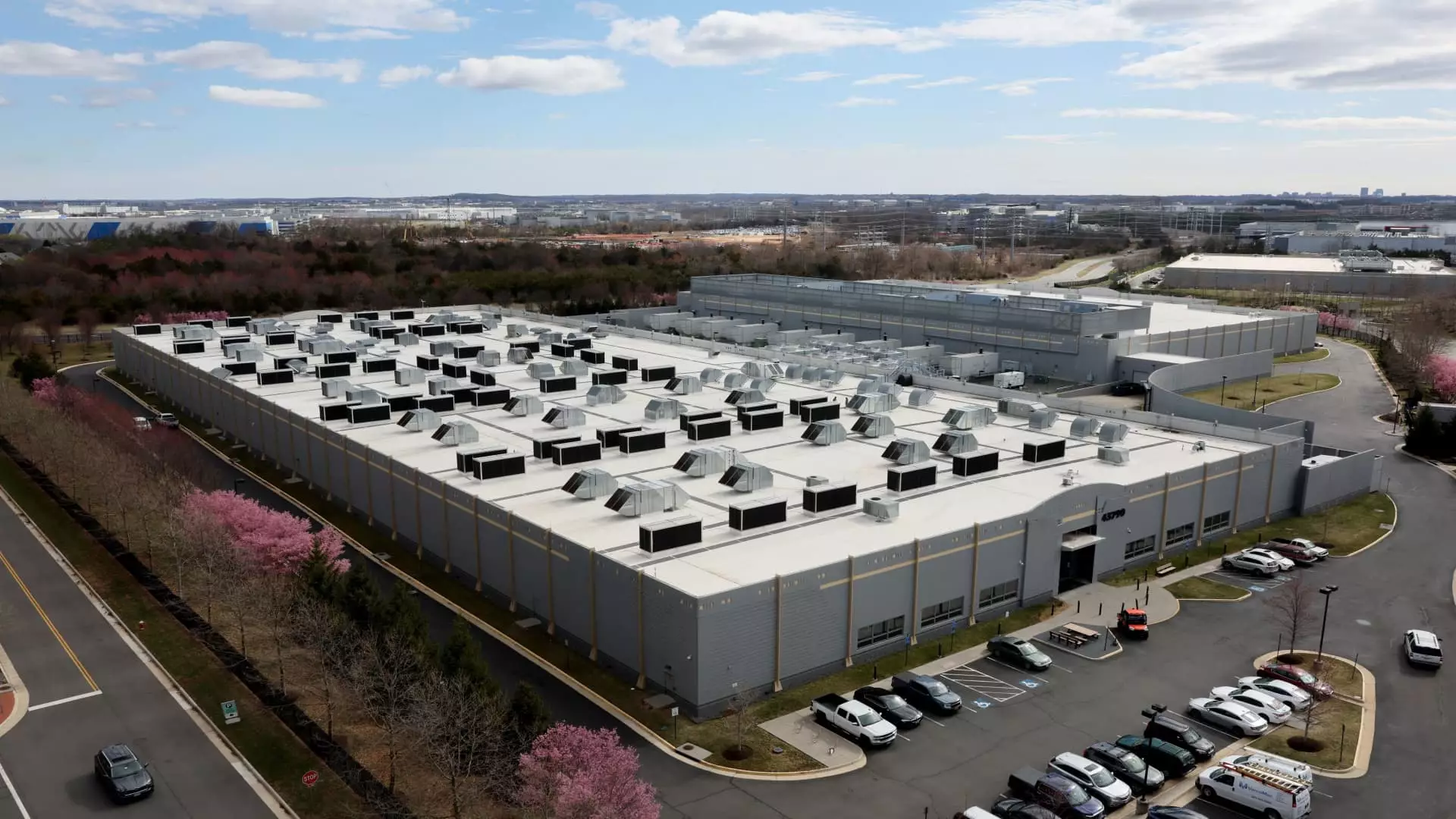In an ambitious move signaling a significant shift in the energy landscape, Abu Dhabi’s Sovereign wealth fund, ADQ, has forged a powerful alliance with the American private equity firm Energy Capital Partners (ECP). The $25 billion investment partnership emphasizes the necessity of bolstering power generation in the U.S., particularly aimed at supporting data centers and other energy-dependent industries. While on the surface, this collaboration appears forward-thinking, one must question whether this immense financial outlay is a prudent strategy in a world already grappling with energy challenges.
The surge in electricity demand driven by an evolving digital landscape poses a dire concern. With the advent of hyperscale data centers required to support tech behemoths like Amazon, Google, and Microsoft, our energy resources are under unprecedented strain. The U.S. Department of Energy’s assertions—that data center energy consumption has surged dramatically—claim that by 2028, this sector could consume as much power as Japan. This begs the question: in pursuing a $25 billion investment to fuel this rapidly climbing demand, are we rather exacerbating the energy crisis than effectively addressing it?
The Underlying Power Dynamics
This partnership, boasting a 50-50 equity split, is projected to invest in a remarkable 25 gigawatts of various power projects ranging from greenfield site developments to expansions of existing infrastructure. Yet what remains crucial here is not just how much these firms can pour into the industry but the sustainability of such investments. Are we approaching this crisis with a temporary fix rather than foster long-term solutions?
As Sheikh Tahnoon bin Zayed Al Nahyan, the chairman of ADQ, met with an assortment of influential figures, including President Donald Trump and tech luminary Elon Musk, one might wonder about the motives behind such high-profile exchanges. The UAE, appealing for technological partnerships in the hopes of diversifying its economy away from hydrocarbon dependency, fuels a narrative that’s heavy with irony. The same country, rich in oil, is now poised to lead in technological investments ostensibly to combat climate change and the emerging AI race. However, this reliance on substantial energy investments may reveal a disconnection between environmental aspirations and operational realities.
The Risk-Reward Conundrum
The collaboration aligns with broader trends: a surge in investments towards renewable energy as well as AI technologies. However, with energy demand projections hitting alarming heights, the apparent solutions being proposed, such as captive power plants localized near data-intensive industries, feel more like Band-Aids over a gunshot wound. Is it wise to prioritize short-term economic gain over sustainable practices?
While capital deployment and expansion efforts mark a promising frontier for both companies, one must pose the uncomfortable question: Are we fortifying a dangerously reliant system? By channeling resources into energy-intensive infrastructures, are we inadvertently encouraging an unsustainable consumption of power, which could later result in profound economic and environmental consequences?
Entwined Global Objectives
The strategic collaboration can be viewed through a dual lens of cooperation and a tug-of-war for technological supremacy. On one hand, it reflects a concerted effort by the UAE to cement its foothold in emergent technologies, showcasing a commitment to not just capturing new opportunities but actively participating in shaping future paradigms. On the other hand, it raises concerns about the potential overshadowing of energy stability in the pursuit of economic diversification.
Greater access to U.S. technology holds irresistible allure for the UAE, yet raising such stakes may also invite scrutiny from environmental activists and concerned citizens alike. The bold projections suggest a deepened focus on AI and energy transition technologies, yet with energy use soaring, will the social fabric withstand the repercussions of such high-energy demands?
As conversations around future investments unfold, stakeholders must engage with the ethical implications of their decisions. Investing $25 billion isn’t merely a financial maneuver—it carries the weight of responsibility toward communities, workers, and future generations who will inherit the environmental consequences of today’s choices. It raises concerns of whether current leadership may be sacrificing long-term viability for fleeting economic interests amidst a systemic energy dilemma.
While the ADQ and ECP initiative appears promising, a critical examination reveals a far more complex, potentially reckless gamble in a world marked by looming energy crises and environmental uncertainties.


Leave a Reply